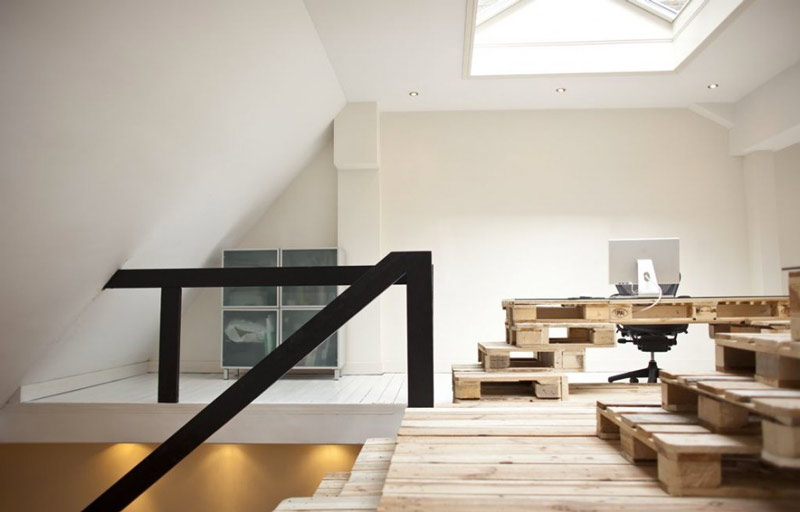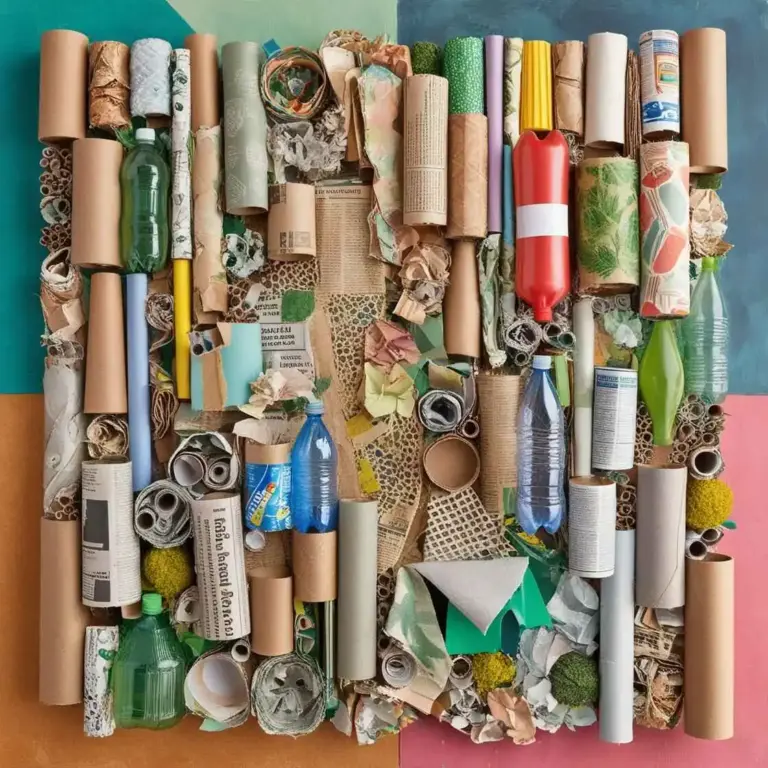Anúncios
The use of recyclable materials in interior design is a growing trend, especially when the goal is to create spaces that combine functionality, aesthetics and sustainability. A notable example of this practice is the project developed by Most Architecture for the advertising agency Brandbase.
The choice of main material could not have been more innovative: pallets, simple yet versatile elements, which became the basis of a creative and dynamic office. This concept space not only demonstrates the infinite possibilities of recycling, but also serves as a source of inspiration for future projects that seek to combine design and environmental responsibility.

Transforming the Pallet into a Work Structure
Pallets, often underestimated and seen only as load-bearing materials, were given a new lease of life in Brandbase’s design. Instead of being discarded or used in a rudimentary way, these elements were cleverly transformed into essential components of the office structure. Upon entering the space, visitors are greeted by a reception area made entirely of pallets, which immediately conveys the message that creativity is the central focus here.
The arrangement of the pallets in the space was designed to create two rows of desks, which together provide a total of eight workstations. These desks, distributed on two different levels, give the office a dynamic atmosphere, where the flexible design allows for fluid interaction between employees. The use of pallets to create different workstation levels also shows how simple materials can be used to introduce innovative design elements, such as varying heights and creating multifunctional spaces.
The Role of Pallets in Designing Creative Spaces
The choice of pallets was not just an aesthetic decision; it also reflects a commitment to recycling and sustainability. The design of Brandbase’s office proves that it is possible to create sophisticated and professional environments using recyclable materials. The pallet structure, in addition to serving as support for the work desks, was also used to create a staircase that leads to the upper floor of the office. This staircase, like the rest of the space, reflects the ability of pallets to adapt to different functions, showing that recycling does not need to be limited to final products, but can be integrated into all stages of a design project.
On the upper floor, pallets continue to be the star of the show, forming tables and sofas that complete the work environment. In addition to being highly functional, these pieces of furniture also contribute to creating an informal and welcoming space where creativity can flow freely. The use of pallets to build furniture is a trend that has spread throughout the world, both in corporate and residential environments, due to its versatility and sustainable appeal.
The Potential of Recycling
Most Architecture’s project for Brandbase is a clear example of how recycling can be taken to a new level when combined with smart design. Pallets, which are often seen as disposable materials, were transformed into central elements of a space that is both functional and visually appealing. This type of initiative highlights the importance of recycling not only as an environmentally responsible practice, but also as a form of innovation in interior design.
Furthermore, the use of pallets in Brandbase’s design serves as a reminder that sustainability doesn’t have to be synonymous with simplicity or lack of sophistication. On the contrary, sustainable design can be highly sophisticated, incorporating elements that not only reduce environmental impact but also add aesthetic and functional value to spaces. Pallet recycling, in this context, demonstrates how humble materials can be reinvented and reused in ways that challenge traditional design expectations.
Recycling in Contemporary Design
The use of pallets in interior design is increasingly popular, not only because of their sustainability, but also because of their cost-effectiveness. In projects like Brandbase's, pallets are used in creative and innovative ways, showing that it is possible to create work or living environments that are both functional and visually striking.
Pallets are a sturdy material that are easy to find and relatively easy to work with, making them a popular choice for recycling and DIY projects. Additionally, recycling pallets helps reduce the amount of waste that would otherwise be thrown away, helping to conserve natural resources and reduce your carbon footprint.
Incorporating into Your Own Projects
If the Brandbase office example inspired you, you might consider incorporating pallets into your own home décor or furniture projects. Pallets’ versatility allows them to be used in a wide variety of applications, from tables and shelves to beds and sofas. The important thing to remember is that when working with pallets, it is essential to check the origin and treatment of the wood, especially if they are used indoors or for the construction of furniture that will come into direct contact with food or people.
Additionally, pallets can be combined with other recyclable materials, such as metal or glass, to create pieces that are truly unique and personalized. Using pallets in design projects not only promotes recycling, but also allows you to experiment and develop your own design and construction skills.
The Future of Recycling
Most Architecture’s project for Brandbase is not only an example of sustainable design; it’s also proof that recycling materials like pallets can lead to the creation of innovative and inspiring spaces. As more designers and architects adopt sustainable practices in their projects, the use of pallets and other recyclable materials will likely continue to grow, redefining what we mean by eco-friendly design.
Pallet recycling offers a practical and affordable solution to many of the challenges facing contemporary design, including the need to reduce waste and minimize environmental impact. At the same time, it offers endless opportunities for creativity and innovation, showing that sustainable design is, above all, a question of perspective and a willingness to experiment with new ideas.
Learn how to make other arts by recycling, Click here.
Check out interesting facts about recycling clicking here.




